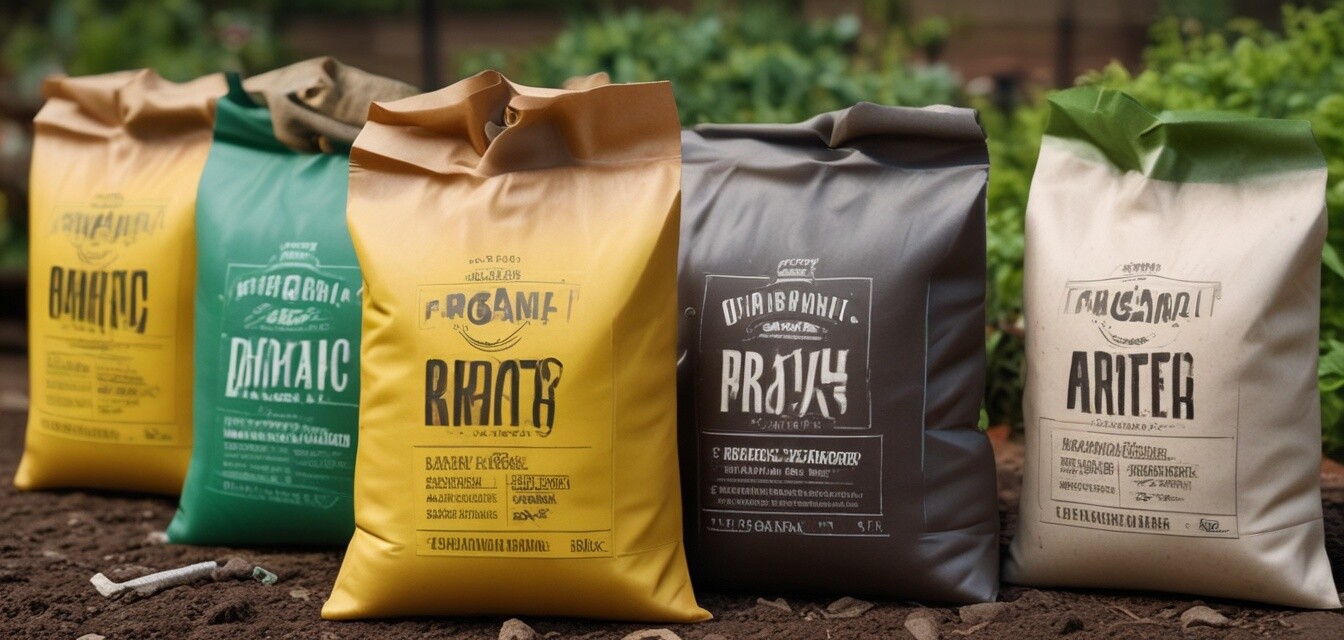
Understanding organic labels on fertilizers
Key Takeaways
- Organic fertilizers must meet specific standards set by certifying bodies.
- Labels can provide information about nutrient content, the source of ingredients, and application instructions.
- Look for certifications such as OMRI or USDA Organic for verified organic products.
- Understanding terms like "slow-release" or "liquid" can help you choose the right fertilizer for your gardening needs.
- Familiarize yourself with the N-P-K ratio for assessing nutrient levels.
For gardeners looking to nourish their plants while maintaining environmental sustainability, understanding organic fertilizer labels is crucial. With a plethora of options available, being equipped with the right information helps to make informed choices, ensuring that your garden thrives in the best possible way.
What to look for on an organic fertilizer label
Organic fertilizers are not just one-size-fits-all. Pay attention to the following sections of the label:
- Nutrient Content: This shows the primary nutrients enclosed in the fertilizer.
- Source of Ingredients: Indicates whether the ingredients are plant-based, animal-based, or mineral-based.
- Certifications: Verify if the product is certified organic by organizations like OMRI or the USDA.
- Application Instructions: Details on how to use the fertilizer effectively without harming your plants.
N-P-K Ratio Explained
One of the most important aspects of fertilizers is the N-P-K ratio, which stands for Nitrogen, Phosphorus, and Potassium. Here's how it works:
| Nutrient | Function | Common Sources |
|---|---|---|
| Nitrogen (N) | Promotes leafy growth | Blood meal, Fish emulsion, Alfalfa meal |
| Phosphorus (P) | Supports root development and flowering | Bone meal, Soft rock phosphate, Fish meal |
| Potassium (K) | Enhances overall plant health and disease resistance | Kelp meal, Wood ashes, Potassium sulfate |
Understanding Certifications
When selecting organic fertilizers, it’s essential to identify reliable certifications. Here’s a brief overview of some important ones:
- OMRI Listed: Indicates that the product is compliant with USDA organic regulations.
- USDA Organic: Generally means that at least 95% of the ingredients are produced without synthetic fertilizers or pesticides.
- Natural Organic Program (NOP): Focuses on sustainable farming methods not requiring synthetic chemicals.
The difference between synthetic and organic fertilizers
It's essential to understand how organic fertilizers significantly differ from their synthetic counterparts:
Pros
- Improves soil health and biodiversity
- Environmentally friendly and sustainable
- Stable nutrient release over time
- Often contains beneficial microorganisms
Cons
- Can have a slower nutrient release compared to synthetic
- May require larger quantities for the same nutrient levels
- Price can be higher depending on sourcing
Common organic fertilizer types
There are various types of organic fertilizers, each tailored for different gardening needs:
- Compost: A balanced mix of carbon and nitrogen, great for enriching soil.
- Manure: Rich in nutrients, often requires aging for safety and efficacy.
- Fish emulsion: A liquid fertilizer suitable for rapid disease resistance.
- Kelp meal: Provides trace minerals and hormones for plant growth.
- Bone meal: Excellent for root development and flowering.
Conclusion
Selecting the right organic fertilizer is a crucial step towards a flourishing garden. By understanding how to read the labels, what to look for, and the different types available, you can make informed decisions that benefit your plants and the environment. Remember, each label tells a story about the product; take your time to read it carefully before making a purchase.
Beginner's tips for reading fertilizer labels
- Start with familiarizing yourself with commonly used terms and certifications.
- Always check the N-P-K ratio for a balanced approach to plant nutrition.
- Consult with local gardening experts for recommendations on local soil conditions.
- Experiment with different fertilizers to find what works best for your garden's unique needs.